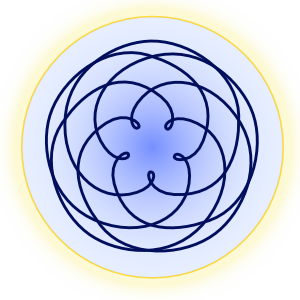The Russian Revolutions of 1917 (Part II)
Part 2: The February and October coups
Were the Russian Revolutions of 1917 (in February and in October) historical necessities? Were they a result of spontaneous events and an uprising of the Russian people to overthrow the czarist autocracy? They most certainly were not. There were great forces and finances in action with a long-planned aim to overthrow the Czar and impose a communist dictatorship of foreign origin on Russia.
Continued from “The Russian Revolutions of 1917, Part 1”
Published Feb 24, 2022
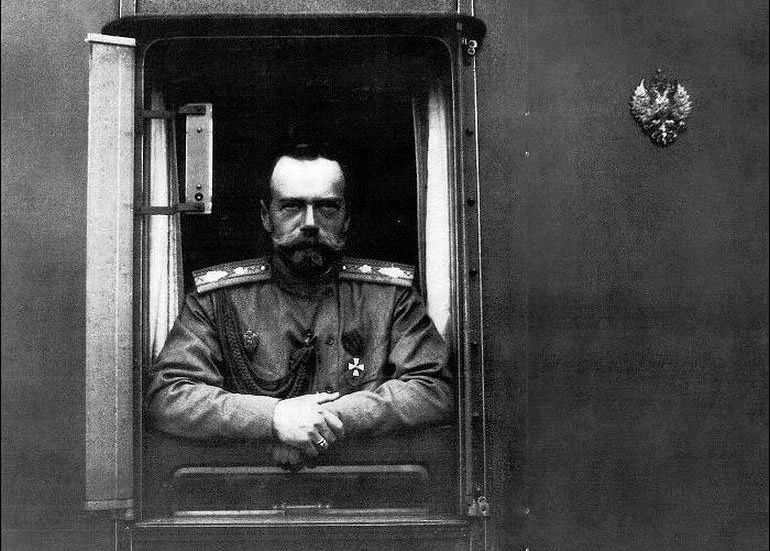
Overthrow of the existing order in Russia was the openly avowed aim of the Russian revolutionary movement already from early days of the 19th century. The first Russian revolutionaries (e.g. Alexander Herzen, Sergei Nechayev and Mikhail Bakunin), though differing on some points of revolutionary theoretics, were unanimous in maintaining that the primary condition of any form of social improvement was the complete overthrow of the existing order and consequently directed their activities to preaching "destruction for destruction's sake.1 Consequently, A. Herzen called for
... destruction of the world by which the "New Man" was being strangled. Hail chaos and destruction! Hail death! Make room for the future!2
Russian revolutionaries set about organizing a campaign of intense propaganda with the primary aim of discrediting the Czarist regime. For example in 1902, Vladimir Lenin, then a member of Central Committee of the Russian Social-Democratic Party, wrote in a pamphlet:
Social democracy is a revolutionary party. Its members are conspirators and revolutionaries who should, unreservedly, resort to any and every means leading to the overthrow of the government and of the bourgeoisie.3
This principle of "everything is morally justifiable to a revolutionary" was shared strongly by Nechayev and Bakunin and later was a main thesis for other communist tyrants to achieve their goals, e.g. for Mao Zedong in China.
Phase One: The February coup of 1917
Historian Richard B. Spence has concluded that the 1917 revolutions developed within the framework built up in 1905 and this activity was intensively supported by several forces, mostly from abroad. This so-called February Revolution, in reality a carefully orchestrated coup d’état, achieved in a week what the Revolution of 1905 failed to do in almost a year.4
Already one year earlier, in February 1916, it was learnt that a revolution was being fomented in Russia and that the following persons and businesses were engaged in preparing and giving financial backing to this destructive enterprise:
- Jacob Schiff;
- "Kuhn, Loeb & Co" (its directors: Jacob Schiff, Felix Warburg, Otto Kahn, Mortimer Schiff, Jerome H. Hanauer);
- Guggenheim;
- Max Breitung.5
As soon as the February revolution was successful, Jacob Schiff invested a million rubles in the bonds of Kerensky government in 1917. 6
Also, a secret report dating from February 15, 1916 on the Russian Revolutionary Party in America, which consisted mainly of professional revolutionaries and veterans of 1905, described their taken policy on overt action:
/…/ The discussions at this meeting [in the evening of February 14th] were mainly centered around the opportunities offered and the means available for staging a revolution on a grand scale in Russia, the present time being considered extremely propitious. /…/ The party had just received from Russia secret information to the effect that all the necessary preliminaries for an immediate rising had been concluded./…/ At the appropriate time, the necessary money would be supplied by sympathizers. In this connection the name of Jacob Schiff was repeatedly mentioned. 7
Forces in play
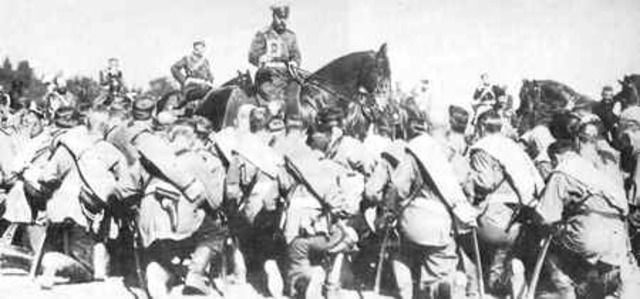 There were several forces in play to initiate an overthrow of the Czarist regime in Russia. All of them had to wait for the right moment and the right time. As if dry wood was all carefully and methodically gathered and laid out, the place for the fire prepared and just the spark was needed to lit it all. The right moment and the spark was offered in the end of 1916 and the beginning of 1917, when Russia encountered several setbacks in the World War, the war brought about a number of unwanted consequences to the society and systematic radical propaganda had finally managed to increase discontent among various social groups in the society. It was also affected by the fact that Czar Nicholas II was not a man of strong leadership, strategic thinking and bold actions. He was more of a emotional kind of man, passionate for his country and the inherited thrown, but lacked the qualities that were needed to confront effectively all those different forces that were working relentlessly to create a revolution.
There were several forces in play to initiate an overthrow of the Czarist regime in Russia. All of them had to wait for the right moment and the right time. As if dry wood was all carefully and methodically gathered and laid out, the place for the fire prepared and just the spark was needed to lit it all. The right moment and the spark was offered in the end of 1916 and the beginning of 1917, when Russia encountered several setbacks in the World War, the war brought about a number of unwanted consequences to the society and systematic radical propaganda had finally managed to increase discontent among various social groups in the society. It was also affected by the fact that Czar Nicholas II was not a man of strong leadership, strategic thinking and bold actions. He was more of a emotional kind of man, passionate for his country and the inherited thrown, but lacked the qualities that were needed to confront effectively all those different forces that were working relentlessly to create a revolution.
As have been already shown, the German government offered systematic and large-scale financial support to communists and their propaganda, mainly through Izrail Lazarevitš Helphand (alias Alexander Parvus), which started at least in 1915. A German socialist with close links to the postwar Weimar government estimated the subsidies to the Bolsheviks to have exceeded 50 million Deutsche Mark in gold - a sum equivalent to $6-$10 million, which at the time would have purchased nine or more tons of gold. The bulk of the funds seems to have been channelled through a German Embassy official in Stockholm, Kurt Riezler. Riezler paid them to Fürstenberg-Ganetski, an associate of Lenin's and an employee of Parvus's.8 Also, strong financial backing to the bolshevik revolutionaries came during many years from various Western capitalists, mainly from financial and industrial forces in the USA, Germany, UK etc.
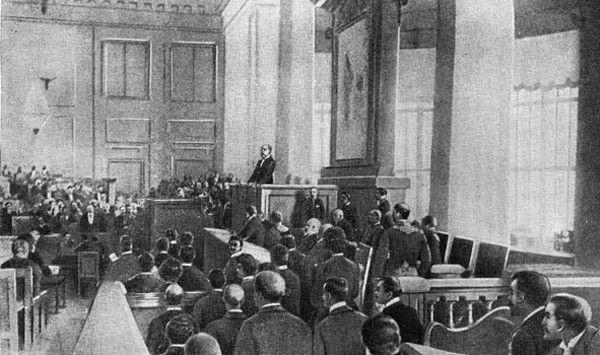
And of course, there were political forces in Russia, who unleashed their actions through the Duma, the Russian Parliament. Opposition in the Duma, agitated amongst others by a socialist Alexander Kerensky, used for many years all possibilities to attack the Czar and its government during the ongoing World War. As historian Richard Pipes has stated on Kerensky’s role already in 1915:
One of the most aggressive speakers was a 34-year-old radical lawyer, Alexander Kerensky, who, as became known after the Revolution, utilized his parliamentary immunity to organize forces for the overthrow of Czarism.9
When the Duma session opened in November 1, 1916, Kerensky again started with a highly inflammatory and hysterical speech. But the biggest effect then was created by Pavel Miliukov, Duma deputy speaker and the leader of the Kadets (Constitutional Democratic Party), who accused the government even of treason, stupidity and his speech was later reproduced in hundreds of thousands of copies. But as Richard Pipes clarifies:
Miliukov's accusations had no basis: in fact, they were a tissue of lies. Later, in emigration, he admitted as much.10/…/ In reality, his speech contributed as much as anything the government did or failed to do to inflaming revolutionary passions./…/ The passions unleashed by Miliukov played a major role in instigating the February Revolution, in which anger over alleged government treason was, at first, a dominant motive.”11
What could have been a plausible cause for those men, representing different political views, to act in such a way? Was it love for their country or just pragmatic political choices? It seems likely that most of those activists were having yet another strong link between themselves, a secret tie, which made its strong mark on their actions and steps.
Masons role
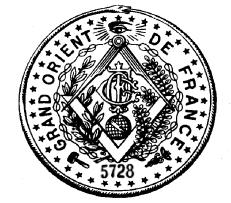
As already noted, Kerensky was a high-level freemason and a Secretary General of the Supreme Council of Grand Orient (Veliki Vostok) in Russia in 1916, chosen by fellow freemasons in July 1916.12 Pavel Miliukov was a freemason and a vice-chairman of the Group for the Intraparliamentary Association of Freemasons from 1910.13
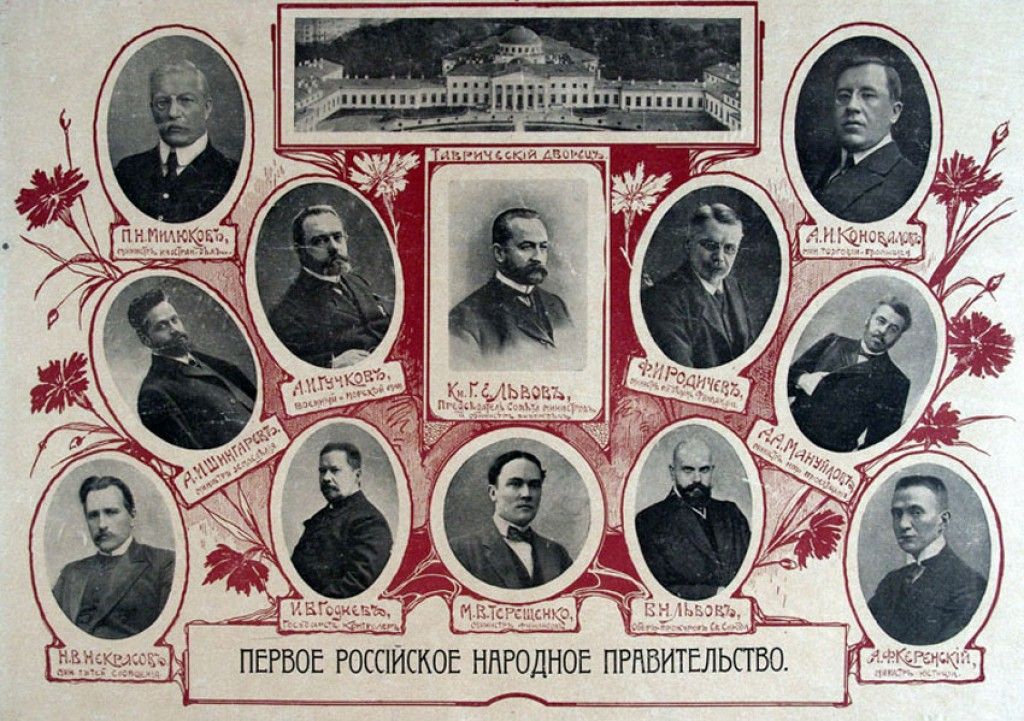
Moreover, after Czar Nicholas II was forced to abdicate on March 2, 1917, the Provisional Government was formed on the same day, which was led by Prince Georgi Lvov and where all ministers were freemasons.14 Alexander Kerensky became the Minister of Justice and Pavel Miliukov the Minister of Foreign Affairs. Other freemason-ministers were Guchkov, Nekrasov, Konovalov, Tereshchenko, Manuilov, Shingarev, Lvov. In July, Kerensky became the Minister-President (Prime Minister) of the Provisional Government.
According to Anna Vyrubova, the best friend and confidante of Tsarina Alexandra Fyodorovna, Czar Nicholas II was forced to abdicate by his trusted relations, friends and generals and also hearing the threats of murdering his family.15 Those who forced the Czar to abdicate were the following freemasons: Alexander Guchkov and Vasili Shulgin from the Duma, who showed themselves in a specially arrogant and vain way, army general Nikolai Ruzsky, who arrested him in Pskov and Nikolai Nekrasov16, who was one of the initiators of the plan for abdication, under the direction of the Supreme Council of Grand Orient (Veliki Vostok).17 Czar Nicholas II constantly repeated that he was betrayed by those close to him.
The very Pavel Miliukov, later in exile, revealed in his memoirs that the February Coup was a masonic plot. The Russian freemasons had a plan ready for overthrowing the Czar in 1916. The initial list of the people who were to make up the Provisional Government was drawn up in Pavel Ryabushinsky’s flat already on August 13, 1915.18 Also other authors have come to a conclusion that the freemasons played a key role in instigating the overthrow of the Czar.19 The legend of a “spontaneous” revolt of the people has thus been contradicted by several testimonies and researchers.
Phase Two: The October coup of 1917
Historian Richard Pipes has described the events that lead to the “October Revolution” in the following:
And contrary to a common propaganda legend by the communists and socialists, he concluded:The events that led to the overthrow of the Provisional Government were not spontaneous but carefully plotted and staged by a tightly organized conspiracy. It took these conspirators three years of civil war to subdue the majority of the population. October was a classic coup d'etat, the capture of governmental authority by a small band, carried out, in deference to the democratic professions of the age, with a show of mass participation, but with hardly any mass involvement.20
/.../ Coup d’etat happened on November 7, when the Bolsheviks took over all strategic places [in Petrograd] without a single gun shot./…/21
Paved way back to Russia
After the Provisional Government took power in Russia in March 1917, communist revolutionaries were hurried back to Russia from abroad to finish the revolution. Lenin started his journey on April 4, 1917, accompanied by at least 32 revolutionary communists like Apfelbaum-Radomyslsky (Zinovyev), Brilliant (Sokolnikov), Abramovich, Goberman, Aizentuch, Rosenblum and others. Contrary to a legend their train was not sealed, but in conformance with the agreement, no Germans entered the car.22 This gang travelled from Switzerland across Germany through Sweden to Petrograd in Russia to "complete the revolution." Their trans-Germany transit was approved, facilitated, and financed by the German General Staff.23 A representative of the Ministry of Foreign Affairs of Germany in Scandinavia sent a telegram to Berlin on the 17th of April, 1917: "Lenin's journey to Russia went well. He will do precisely what we wish from him."24
Leiba Bronstein (alias Leon Trotsky) began his journey back to Russia with an American passport on March 26, 1917 on S.S. Kristianiafjord together with several hundreds of other revolutionaries, communists and some Wall Street financiers. US President Woodrow Wilson saw to it that a passport was provided to Trotsky for returning to Russia “to carry forward the revolution”. This American passport was accompanied by a Russian entry permit and a British transit visa.25 According to Antony Sutton, Trotsky and his family had been living in opulence in the US just for some months on the hidden support of possibly German and American financiers26, where according to his own memoir his only profession and task was that of being a revolutionary socialist27. In March 1917, just days after the Czar’s abdication and the formation of the Provisional Government in Russia, Trotsky made a “prediction” in an interview, while still being in an exile in the USA:
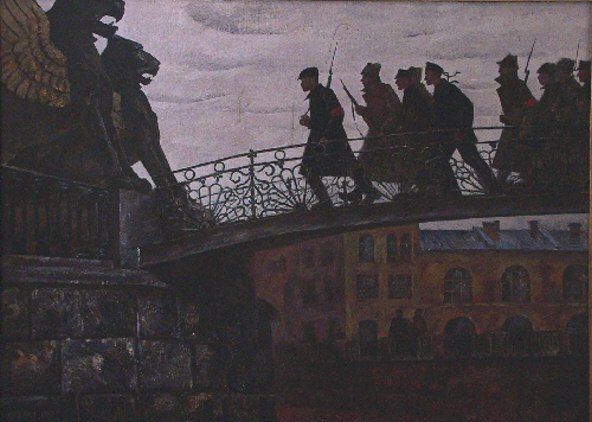
By the latter men he meant the communist revolutionaries.... the committee [the Provisional Government] which has taken the place of the deposed Ministry in Russia did not represent the interests or the aims of the revolutionists, that it would probably be shortlived and step down in favor of men who would be more sure to carry forward the democratization of Russia.28
Dr Antony Sutton has in his research highlighted several relations between Trotsky and his comrades, American communists, Wall Street bankers and president W. Wilson. But the most interesting point, however, is “not so much the communication among dissimilar persons like [financier] Crane, [communist] Steffens, Trotsky, and Woodrow Wilson, as the existence of at least a measure of agreement on the procedure to be followed — that is, the Provisional Government was seen as "provisional," and the "re-revolution" was to follow.” 29
Passive Provisional Government
Indeed, it is notable that already in the spring of 1917, Minister of Foreign Affairs of the Russian Provisional Government Pavel Miliukov received a confidential warning from his British colleague that Lenin and other revolutionaries, financed by Germany, were on their way to Petrograd in a train with the avowed goal of overthrowing the Provisional Government. As shown, those revolutionaries received systematic financial support also from Western financiers. The Provisional Government took a remarkably passive approach towards the bolshevik revolutionaries, which can be interpreted as a conscious decision to act as “Provisional Government” for a new regime, which was supposed to come after it. According to Nesta Webster, it was the Minister of Justice of the Provisional Government Alexander Kerensky, who directly fetched Lenin and Trotsky back to Russia.30
When Lenin, Trotsky and their revolutionary comrades arrived in Russia, they had money in their pockets to launch a more systematic activity of propaganda and agitation towards the masses for finalizing preparations for taking the power. They published a large number of newspapers and periodicals, a total of 41, including 17 daily newspapers. The circulation of “Pravda” increased from 3 000 copies to 300 000 in May 1917. It was given out free, also among the soldiers at the German front.31
In the coming months the bolsheviks worked for spreading the communist propaganda, foment discontent and organizing street revolts and riots against the Government. They were gradually and decisively building their base and at the same time refusing to co-operate in any form with other political forces. They were on their way to full power and used all means to that end – also of course promising every group whatever it wanted and encouraging every destructive trend. The Provisional Government acted in a notoriously passive way and demonstrated it’s indecisiveness in many instances. In late July, 1917, Pavel Miliukov described the situation in Russia as, "chaos in the army, chaos in foreign policy, chaos in industry and chaos in the nationalist questions".
Kornilov's revolt
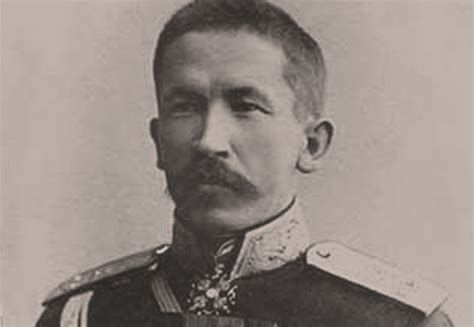
On the other hand, two events, which happened in summer 1917, were not in the plans of the conspirators: revelations of the bolshevik leaders being on German payroll, which was dealt with previously and the revolt against the Petrograd Soviet and the Provisional Government led by General Lavr Kornilov (1870-1918). Kornilov was one of the generals of the Russian army, who stopped backing the Czar during the February Revolution and was the one who placed Empress Alexandra and her children under house arrest at the Alexander Palace on March 8, 1917.32 Later he changed his mind and considered the revolutionaries and the bolsheviks as the biggest threat to Russia. He was appointed Commander-in-Chief of the Russian army in July 1917, but the waves were turned against him just weeks later. After Kerensky started treacherously to accuse him of “treason”33, he turned against the Kerensky Government. He thought of Kerensky as a despicable schemer, the author of a provocation designed to discredit him and the army.34 In his proclamation he accused the Provisional Government of co-operating with the Germans to undermine the state and army.35 Kornilov’s revolt did not last long, as all the forces and means were gathered by a union of Kerensky and the socialists-communists in the Petrograd Soviet to hinder Kornilov’s forces to reach Petrograd. But it further showed the weakness of the Provisional Government, its inability to govern Russia and paved the way for revolutionary communist to gain power.
Power handed over
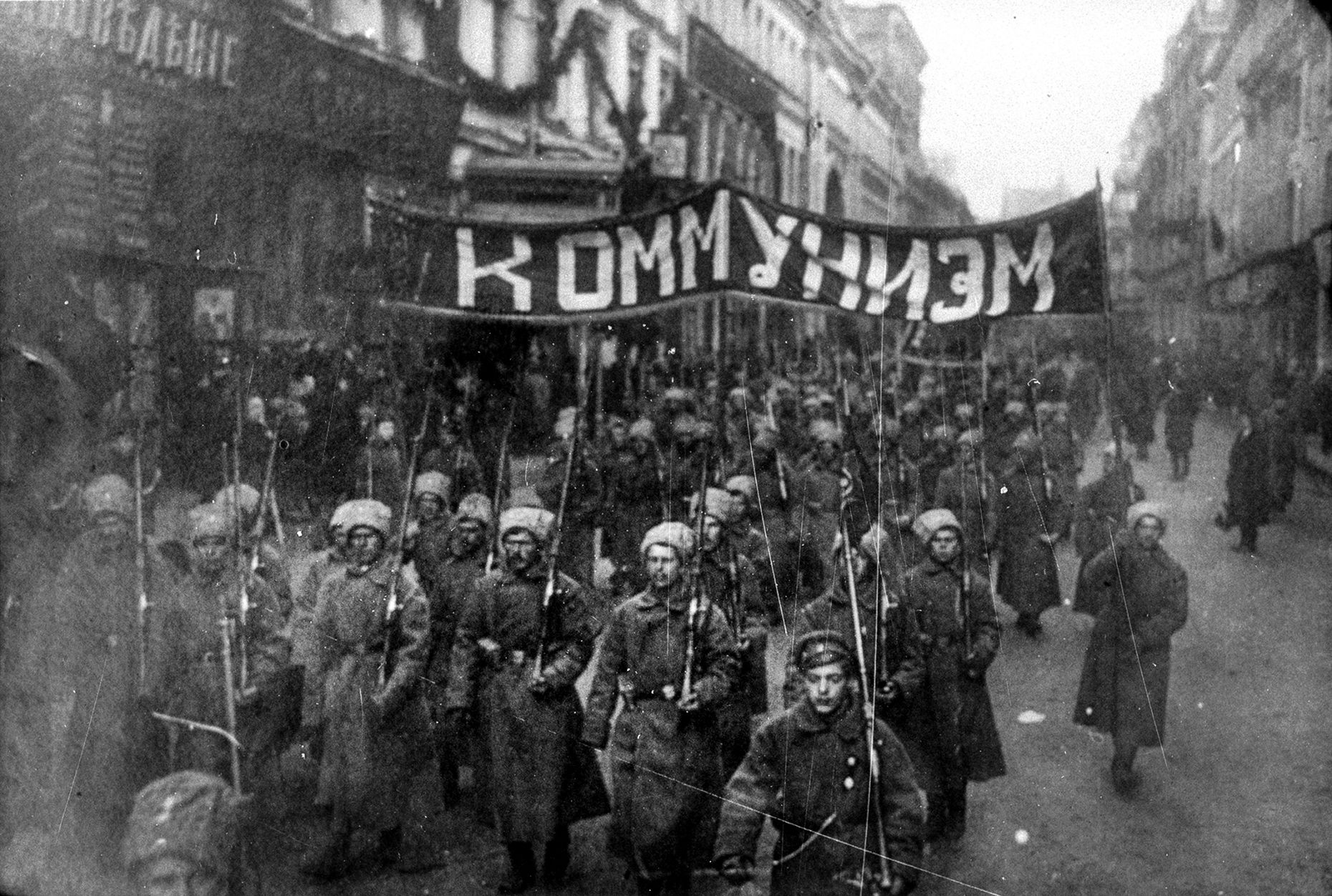
Unrest and fluster increased in Russia in autumn. The Provisional Government continued its passive approach and made eminently little effort to hinder the bolsheviks, who made no secret of their plans to seize power. A commission headed by the Minister of Justice had by early October collected eighty thick volumes of evidence on the bolsheviks treasonous activity using German money, yet no legal proceedings were ever instituted by Kerensky’s government. Historian Pipes has pointed out that Kerensky’s tolerant treatment of the bolsheviks, who had almost overthrown him and his government in July, contrasted sharply with the impetuous manner he dealt with General Kornilov.36 Several bolsheviks (e.g. Kamenev, Zinovyev) openly wrote about their plans to take power, e.g. in the newspaper Novaya Zhizn. Authorities knew of their plans in detail, but did not counteract them. Prime Minister Kerensky did not even do the obvious – organize protection of Russia’s capital city, Petrograd. No effective steps were taken to mobilize loyal forces, including some 15 000 officers then living in the capital in idleness.37 A memorandum from the Great Britain Foreign Office on October 23, 1917 states that several sources have claimed Kerensky to be on German pay and that his government is doing “their utmost to weaken (and) disorganize Russia, so as to arrive at a situation when no other course but a separate peace would be possible” and that the government by refraining from any effective action could be purposely allowing the bolshevist elements to grow stronger.38
The preparations for the bolshevik coup itself were well known in the US State Department at least six weeks before it came about in the beginning of November, 1917. Also, the British government warned British residents in Russia to leave at least six weeks before the Bolshevik phase of the revolution.39
The bolsheviks, led by Leon Trotsky in September and October 1917, focused mainly on establishing a military arm for raising to power and using it against their political competitors. Military Revolutionary Committee (Milrevkom), which was formally created by the Petrograd Soviet on October 29 (October 16 according to the old Russian calendar), 1917, took gradually over the real power in Petrograd. The key members of Milrevkom were:
- Vladimir Uljanov (alias Nikolai Lenin),
- Leiba Bronštein (alias Leon Trotsky),
- Hirsch Apfelbaum (alias Grigori Zinovyev, alias Gerson Radomyslsky),
- Lev Rosenfeld (alias Lev Kamenev),
- Hirsch Brilliant (alias Grigori Sokolnikov),
- Yankel-Aaron Solomon (alias Yakov Sverdlov),
- Ioseb Djugashvili (alias Joseph Stalin),
- Felix Dzerzhinsky,
- Moisei Uritsky and
- Andrei Bubnov.
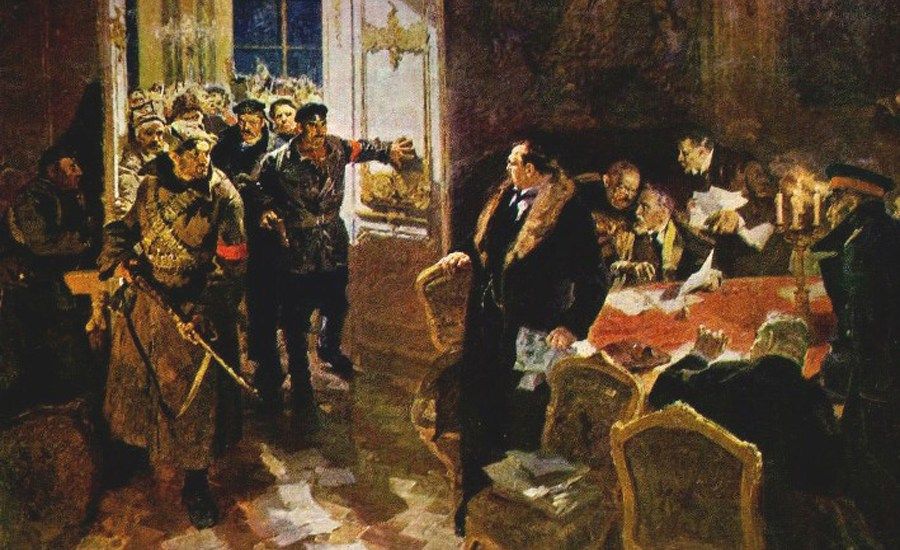
Historians Mikhail Heller and Aleksandr M. Nekrich have stated in their voluminous research “Utopia in Power: The History of the Soviet Union from 1917 to the Present” that in fact Milrevkom took over the power from the Provisional Government already on November 3, 1917 (October 21), when it's bureau issued an order to stop any weapons from being given out without its authorization and sent commissars into the military units to make sure that this edict was enforced. On the morning of November 4 (October 22), the garrison was notified by telephone of this decision, which specified among other things that no order would be valid unless signed by the Milrevkom. The revolution had already happened, although nobody in the city was aware of it.40
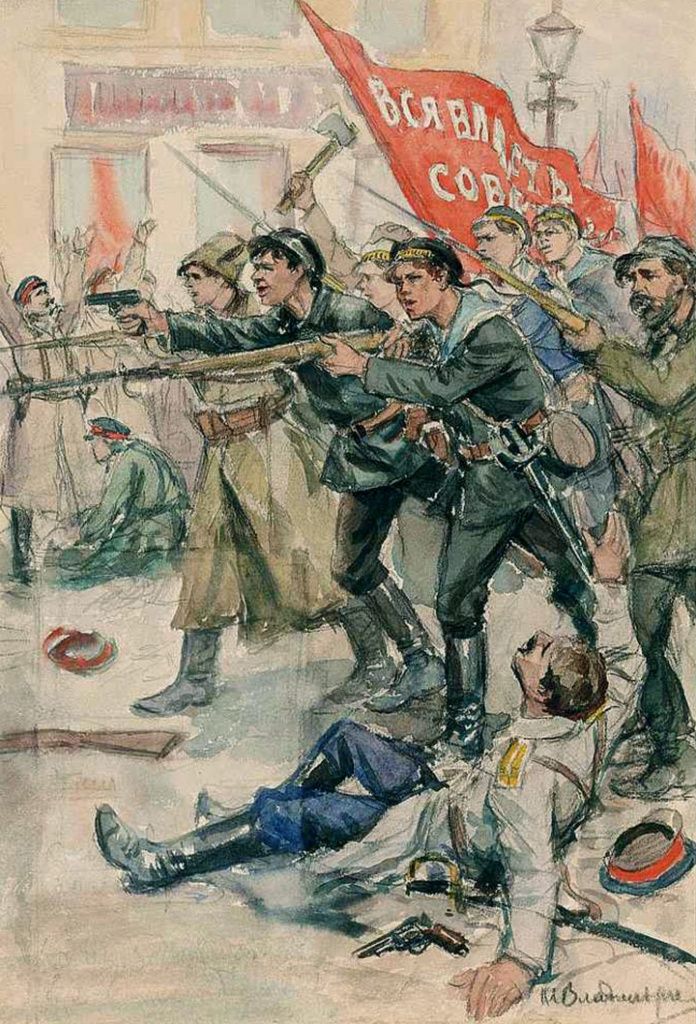
Formally, theatrically and symbolically the transfer of power took place on November 8 (October 26), 1917 at 2.04 AM, when the Winter Palace was taken over. According to one source, Trotsky’s close associate Vladimir Antonov-Ovseyenko (1883-1938), secretary of the Milrevkom, had been given the task of notifying the Provisional Government of the change of power at the exact moment foreseen. Just some minutes after 2 o’clock at night on November 8, he stated to his impatiently waiting comrades at the door of the Malachite Hall of the Winter Palace, where the Provisional Government was sitting: “It is time!” (“Para!”). Then he opened the door and said to the ministers of the Provisional Government: “Gentlemen, your time is up!”.41 There have been indications that the bolsheviks were meticulous with choosing the right time for taking the power from an astrological point of view, although they carefully hid their deep interest in this discipline, also by publicly declaring astrology to be pure superstition.
The members of the Provisional Government were taken into custody, except Kerensky, who managed to leave the same evening from the Winter Palace using a car from the U.S. Embassy. Historians Nesta Webster and Kurt Kerlen have stated that freemasons Lenin and Trotsky let freemason Kerensky "disappear" in recognition of his contributions when he protected the bolsheviks from the public in July 1917 and for handing over the power in October/November 191742 . Lenin and Trotsky supplied him with false documents and a large amount of money and had him escorted to Murmansk, which had been occupied by the British. He escaped to England, lived later as a wealthy man in Berlin, Paris and California and died in New York on June 12, 1970.
Also several other ministers of the Provisional Government left to go abroad (A.Konovalov, M.Tereshchenko, A.Guchkov, P.Miliukov etc) and several others received a remarkably soft landing after the takeover of the bolsheviks. E.g. high-level freemason43 , Minister of Finance and last Governor-General of Finland Nikolai Nekrasov (1879-1940), became a member of the governing board of the Union of Consumer Cooperatives from 1921 to 1930.44 Freemason and Minister of Education of the Initial Provisional Government Alexander Manuilov (1861-1929) later worked in the administration of the Soviet State Bank45 . Freemason and Minister of Education in the Second Provisional Government Sergei Oldenburg (1863-1934) became the factual head of the Soviet Academy of Science until 1929.46 High-level freemason47 Sergei Urusov (1862–1937), who worked for the Minister of Interior of the Provisional Government, worked in different Soviet institutions, including the Soviet State Bank.48
All-in-all thousands of communist revolutionaries arrived in Russia from abroad (from US and Europe) to participate in the bolshevik coup d’etat. It turns out that most of those radicals were of a certain background.
(Continues as Unveil the Russian Revolutions of 1917, Part 3)
Arsene de Goulevitch "Czarism and the Revolution" (1962), p 202↩︎
Alexander Herzen “From the Other Shore” (1848-1850), p 64↩︎
A pamphlet entitled "What Should We Do?"; Arsene de Goulevitch “Czarism and the Revolution” (1962), p 213 ↩︎
Richard B. Spence “Wall Street and the Russian Revolution: 1905-1925” (2017), chapter 8, 388.1/706 (epub) ↩︎
General Alexander Nechvolodov, "The Emperor Nicholas II and the Jews." (Paris, 1924), pp. 97-104; US State Department archive document nr 861.00/5339; Paul Johnson “A History of the Jews” (1987), p 459 ↩︎
“Encyclopaedia of Jewish Knowledge”, article “Schiff”, New York (1934) ↩︎
Boris Brazol "The World at the Cross Roads" (1921, Boston), p 19 ↩︎
Richard Pipes “A Concise History of the Russian Revolution” (1996), p 122↩︎
Richard Pipes “A Concise History of the Russian Revolution” (1996), pp 64-65 ↩︎
P. Miliukov "Political Memoirs 1905-1917" (1967); Stockdale "Paul Miliukov and the Quest for a Liberal Russia, 1880-1918" (1996), p 234 ↩︎
Richard Pipes “A Concise History of the Russian Revolution” (1996), pp 72↩︎
Viktor Brachev “The Victorious February 1917: The Masonic Trail” (2007), Russian ed., p 134↩︎
Four sources from the secret archive indicated in Oleg Platonov “The Secret History of Freemasonry” (Russian edition, 2000), p 289; also Nikolai Svitkov “About Freemasonry in Russian Exile” (1966)↩︎
Oleg Platonov “Criminal history of freemasonry 1731-2004” (Russian edition, 1995), chapter 19; Also Sean Mcmeekin “The Russian Revolution” (2017), chapter 4, (epub 191/1026)↩︎
Anna Vyrubova "The Memoirs of the Russian Court" (1923), pp 214-216 ↩︎
Member of the Supreme Council of Grand Orient (Veliki Vostok) Russia lodge and its Secretary General from 1914-1916 ↩︎
Viktor Brachev “Freemasons and the February Revolution of 1917” (Russain edition, 2007), p 191 ↩︎
Pavel Miliukov “Political Memoirs 1905-1917” (1967); Boris Nikolayevsky “Russian Freemasonry and the Revolution” (1990), p 164 ↩︎
Sergei Melgunuv “The Preparations for the Palace Coup” (1931), pp 170-172; Grigori Aronson “Russia at the Dawn of the Revolution” (1962) ↩︎
Richard Pipes “A Concise History of the Russian Revolution” (1996), p 113 ↩︎
Richard Pipes “Communism. A history.” (2000), p 51 ↩︎
Richard Pipes “A Concise History of the Russian Revolution” (1996), p 116 ↩︎
Antony Sutton “Wall Street and the Bolshevik Revolution” (1981), p 25 ↩︎
Z. A. B. Zeman "Germany and the Revolution in Russia 1915-18: Documents from the Archives of the German Foreign Ministry" (London, 1958), p 51 ↩︎
Antony Sutton “Wall Street and the Bolshevik Revolution” (1981), p 13 ↩︎
Antony Sutton “Wall Street and The Bolshevik Revolution” (1981), pp 21-24 ↩︎
Leon Trotsky memoir “My Life” (1930) ↩︎
Reported in “New York Times”, March 16, 1917 ↩︎
Antony Sutton “Wall Street and the Bolshevik Revolution” (1981), p 21 ↩︎
Nesta Webster, Kurt Kerlen “Boche and Bolshevik” (1923), p 19 ↩︎
Juri Lina “Under the Sign of the Scorpion” (2014), p 276 ↩︎
Helen Rappaport “The Romanov Sisters: The Lost Lives of the Daughters of Nicholas and Alexandra” (2014), p 295 ↩︎
Richard Pipes “A Concise History of the Russian Revolution” (1996), p 134-135; Pipes considered it to be a “Kerensky revolt”, not a Kornilov’s one ↩︎
Ibid, p 134 ↩︎
Published in “Novoye Vremya”, September 11, 1917 ↩︎
Richard Pipes “The Russian Revolution” (1991), 1309.9/2718 (ebook) ↩︎
Richard Pipes “A Concise History of the Russian Revolution” (1996), p 143 ↩︎
File FO 371/2999 (The War - Russia) – Antony Sutton “Wall Street and the Bolshevik Revolution” (1981), p 193 ↩︎
Antony Sutton “Wall Street and the Bolshevik Revolution” (1981), p 29 ↩︎
Mikhail Heller, Aleksandr M. Nekrich “Utopia in Power: The History of the Soviet Union from 1917 to the Present” (1986), p 40 ↩︎
Juri Lina “Under the Sign of the Scorpion” (2014), p 296 ↩︎
Nesta Webster and Kurt Kerlen "Boche and Bolshevik" (New York, 1923), p 19 ↩︎
Secretary General of the lodge Grand Orient (Veliki Vostok) in Russia from 1912-1913 and 1914-1916 ↩︎
"Great Russian Encyclopedia", (https://bigenc.ru/), entry Nikolai Nekrasov ↩︎
Oleg Platonov “The Secret History of Freemasonry” (Russian edition, 2000), 950.7/1622 (epub) ↩︎
Ibid, 964.5/1622 (epub); "Great Russian Encyclopedia", (https://bigenc.ru/), entry Sergey Oldenburg ↩︎
Member of the French lodge Grand Orient from 1908 and Grand Orient (Veliki Vostok) in Russia – Oleg Platonov “The Secret History of Freemasonry” (Russian edition, 2000), 998.7/1622. He was also the contact-person between the French Grand Orient and Russian Grand Orient (Veliki Vostok) – Boris Nikolayevsky “Russian Freemasonry and the Revolution” (1990), pp 56-57 ↩︎
"Great Russian Encyclopedia" (https://bigenc.ru/), entry Sergei Urusov; https://yarwiki.ru/article/696/urusov-sergej-dmitrievich ↩︎
